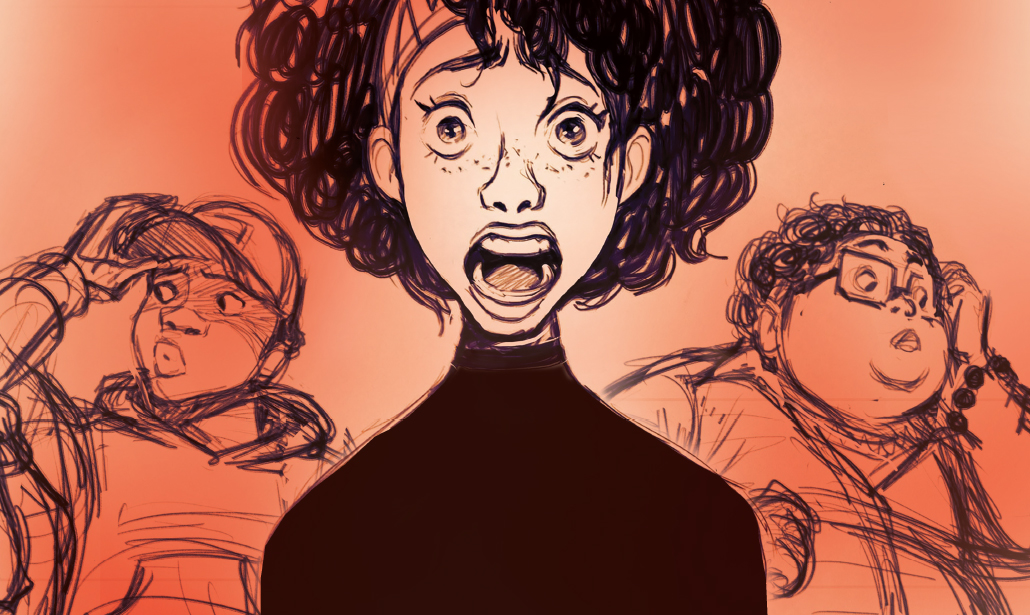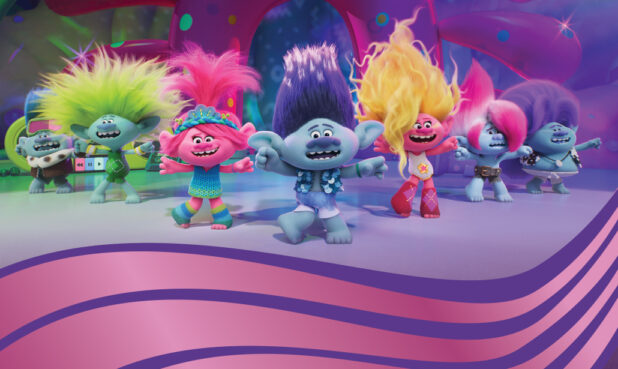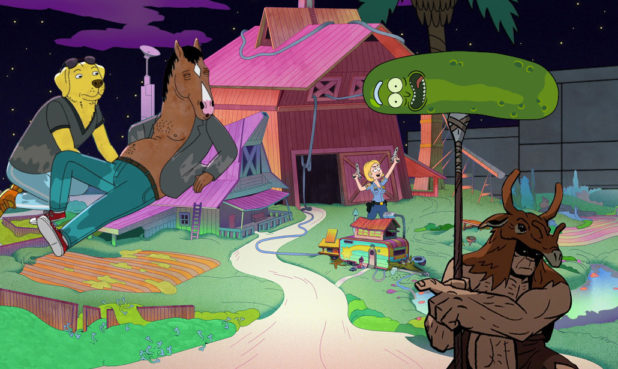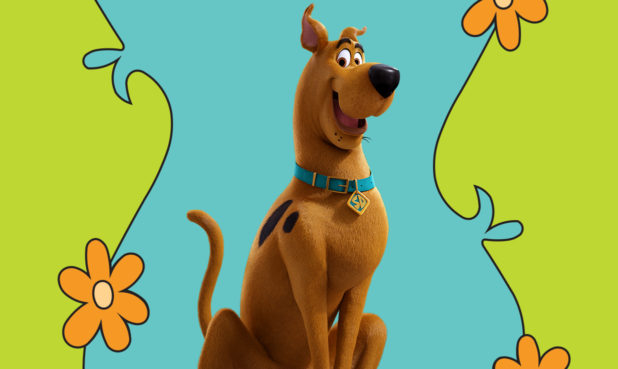When it comes to scaring up believable horror, suspension of disbelief can be more of a challenge for animators than it is for their live-action counterparts. Rather than shying away, they’re rising to meet that challenge. Horror animation is finally coming into its own in the U.S. for audiences of nearly all ages.

On the younger end of the spectrum, DreamWorks is leaping into the horror pool with its new tween series Fright Krewe. One of the show’s creators and Executive Producers is live-action horror master Eli Roth, whose first film work—it turns out—was animation. When he was around nine, he started shooting stop-frame animation with a Super 8 movie camera, and before he made his first live-action feature, Cabin Fever, he directed a series of animated shorts called Chowdaheads.
“I could get lost in animation,” he says, so it’s no surprise that when his friend, Executive Producer James Frey, approached him to do a scary animated show like a new Scooby-Doo, Roth jumped at the chance. But Fright Krewe isn’t a bunch of meddling kids with another mystery on their hands. Rather, it’s an example of how the industry is redefining the boundaries of how much is too much when it comes to scare tactics.
Fear Factors
“We wanted the show to be spooky and scary but not so terrifying it’s traumatic,” Roth says. Finding that balance was a major goal for Joanna Lewis and Kristine Songco, Fright Krewe’s Executive Producers and Showrunners. As self-proclaimed scaredy-cats, they had no choice but to dive deep into horror research, a genre with a surprisingly large number of subgenres: slasher, creature, psychological, and comedic, to name just a few. Because of the age group, Broadcast Standards and Practices limits blood and guts, “so we avoided the classic gory horror tropes,” says Lewis. “[Instead, we allowed] our characters to have really dark moments and cry and yell and react in a visceral away that I think a lot of Western children’s media doesn’t often delve into.”

The Fright Krewe story centers on five kids in New Orleans who are unwillingly brought together doing graveyard cleanup for detention. When one of them, horror buff Soleil, accidentally undoes a spell cast by her ancestor, she awakens a demonic being and his henchmen. The being—no spoiler here—wants to destroy the world. This in turn awakens the Lwa, spirits in the voodoo tradition that serve as intermediaries between humans and the divine.

Each kid has their own Lwa. Not only does this Lwa help them fight the demons, but it also serves as their core strength and contributes to their character growth. “The relationship our kids develop with their respective Lwa opens up this culture that a lot of people aren’t familiar with,” says Leah Artwick, who served as a Director and then Supervising Director for the series.
A respectful approach to voodoo turns the tables on the typical Hollywood portrayal of the religion as something for villains to use in nefarious ways. It also reflects one of the show’s themes: “The perception of something versus what it really is,” says Songco. “Good or evil, what does that actually mean? Everything’s not as black and white as you think it is.”
The kids grapple with complex concepts, and “being able to draw and direct characters that had really raw emotions felt liberating,” says Artwick. “I think it helped all of us fall in love with these characters and identify with them and see them as these fully formed people.”
This kind of emotional investment can be crucial to making the tension in horror work, especially when gore is off the table. But where animation has an advantage over live action is that “we don’t have the constraints of real cameras or real sets,” says Artwick. In addition, Roth adds, when it comes to budgets, having a 20-foot-tall character with 200 eyes in animation costs far less than in live action.
“If you cared about the characters, and you didn’t want to see them harmed, the horror becomes much greater.” —–Mitch Watson
This kind of freedom resulted in complex, shiver-inducing creatures. The team also leaned into the naturally haunted feeling of the New Orleans setting, using environments like graveyards to make the characters feel trapped, or “framing elements to block the audiences view from something that may be lurking behind a building or closed doors,” says Artwick. Using Harmony software, artists employed effects like rim light to make night scenes creepy. Classic jump scares were also employed, and sound effects were a key component. In one of the first episodes, “one of our characters is kind of dragging a metal pipe against the ground,” Artwick says. “Visually you can see it, it works, but once that echoey, creepy, metal scraping [is added], it really brings it to the next level of—oh, I feel like I’m here now.”
“There are different ways to be scared,” says Songco. “You can fear for someone’s life. Those moments where you’re yelling at the screen—don’t do it! Those were the things that we were trying to do. Sometimes creepy whispers, or the right sound effects, will make something as simple as going into a dark room feel scary. We had a lot of discussions with our writers about what are the things that give you nightmares?”
Do Not Enter!
Many of the techniques used in Fright Krewe can be found in action, adventure, and mystery animation. So what makes this series specifically horror? “Scary is part of the DNA of the show, as opposed to an element that pops in,” says Lewis.

Using this criterion, it’s easy to see how skimpy horror animation offerings have been over the decades. Many credit Disney’s 1929 Silly Symphony shorts The Skeleton Dance and Hell’s Bells as being the first. While The Skeleton Dance can feel a little silly, Hell’s Bells manages to disturb with its twisted imagery in the flaming depths of hell. The Legend of Sleepy Hollow, released in 1949, also pulls off an eerie vibe with its depiction of the Headless Horseman, but otherwise, a lot of past animation that calls itself horror has been more playful than terrifying.
Recently, TV series have dipped into realistic horror in hybrid ways. Among them are Gravity Falls, Harley Quinn, and Love, Death & Robots. Then there are shows like The Simpsons Treehouse of Horror specials, annual shorts that parody and reference classic horror films. And of course, for more than half a century, there has been Scooby-Doo.
The ultimate in horror lite—more campy than creepy—Scooby-Doo was a reliable, safe cartoon staple when Mitch Watson was approached to do a reboot. This was around 2008. He’d been interested in horror for a while, he says, but no one would touch the kind of horror he wanted to do with a ten-foot pole. “And it’s tricky when you mess with IP. People love what they love. [But] Sam Register had just taken over WB at that time and was looking to take a challenge, take a risk. … Sam was like, if you did do it, what would you do?” Watson was obsessed with the Battlestar Galactica reboot, and if the studio would let him do something similar, turning a goofy old show into “something amazing,” then he was in.

Like the Fright Krewe team, Showrunner and Head Writer Watson and Supervising Producer and Lead Monster Designer Tony Cervone focused on character as they began developing the 11th incarnation of the beloved franchise: Scooby-Doo! Mystery Incorporated. “The moment we cracked the characters, and all the different permutations that were going on with them psychologically—that allowed the horror to really take on a different kind of shape,” Watson says. “If you cared about the characters, and you didn’t want to see them harmed, the horror becomes that much greater.”
Giving Scoob and the gang emotional resonance was just the beginning. The look was also a significant departure from the original. Art Director Dan Krall’s artwork was jagged and angular, and “we very specifically [wanted] to shoot this like a horror movie,” Watson says. This meant techniques like low camera angles and things happening off camera to build a sense of dread. Stylistically, the team was inspired by the films of John Carpenter and David Cronenberg, and the bright, prismatic color palette of Dario Argento’s Italian horror films.

Still, it was Scooby-Doo. There was only so far they could go. At one point they shot an episode with zombies. “We did it in such a way—we’re not going to play this as a joke,” Watson says. “It’s all going to be straight. We scored it with a really frightening piece of music. When it went to Cartoon Network, they kicked it back. Too scary.”
That was the early 2010s. What a difference a decade makes. Artwick notes the popularity of dark, grim video games and serious, sinister anime among younger audiences, and Songco says, “It does feel like kids are watching scarier things at a younger age. There are some eight-year-olds who are watching Stranger Things.”
“Now, if you’re competing with that, you’ve got to raise the bar animation-wise,” Watson says. “What used to be scary is no longer going to be as scary.”
Human Remains
Naturally, adult shows don’t have the same restrictions as shows for kids. So it would seem that there would be more offerings in this area. But unlike Japan’s long history of horror anime, adult horror animation in the U.S. is still in its infancy. Watson recalls Spawn, HBO’s 1997-1999 TV series. Bloody and graphic, it was an outlier. It wasn’t until 20 years later that Castlevania came along, kicking open doors for the genre. When he first watched it, Watson says, “I remember saying to someone—okay, finally.”
“Horror has always been a kind of allegory for other things going on. Good horror is rooted in the human experience.” —Jeanette Moreno King
The story of Dracula taking revenge after his wife is burned at the stake, Castlevania was made for a mature adult audience. Adam Deats calls the opportunity to do a show like this serendipity.
Deats worked on the series as a Compositing Director, Editor, Key Lighting, Assistant Director, and more, while Sam Deats matched his brother in the multiple roles department as Director, Production Designer, Storyboard Artist, Animator, Prop Designer, Character Designer, and more. According to Sam Deats: “It certainly was a combination of the right property [and] the right creative vision, in conjunction with the timing of its release—and the platform it got released on.” That platform being Netflix, which was having great success with original programming.
-

-

-

“We were fine with dipping stuff way, way down darkness-wise,” says Adam Deats of the dark effects used in Castlevania.
Long before the show got off the ground, though, Adam and Sam Deats had been huge fans of the Castlevania video game, and they recall talk in the mid-2000s of a direct-to-DVD series. But direct-to-DVD was dying out, and the project went into hibernation. They kept an eye on it. Fast-forward 10 years. They were working for Powerhouse Animation (recently unionized under The Animation Guild), a studio that did mostly trailers and promotional and educational work. Sam Deats saw an article indicating the project was getting some attention again. He brought it up to Powerhouse CEO Brad Graeber: “Hey, we should work on that.” Later, in a meeting, when Graeber mentioned that Castlevania was being discussed as a series the studio might take on, Adam Deats says he gasped “very, very loudly.”
Not only did the brothers love the video game, they admired the artwork and had wanted to do anime for a long time. They also noted a hunger among Castlevania fans, and animation fans in general, for a more adult style of content. Because Powerhouse had never done series work before, “we wanted to do it right,” Adam Deats says.
“Good or evil, what does that actually mean? Everything’s not as black and white as you think it is.” —Kristine Songco
This meant tackling issues of believability. While Artwick believes there can be a strong resonance between the audience and animated characters, and “that’s why we cry when [The Lion King’s] Mufasa dies,” she says, the trick gets harder as viewers rise in age.
TAG President Jeanette Moreno King, who was the Supervising Director on Little Demon and is now working on an unannounced comedy-horror pilot, says: “As an animation fan already, when you know and understand that animation language, you’re more willing to [believe]. If you’re a person who only watches live-action horror, and you’re trying animation, that might be a hard thing.”
Adam Deats thinks that it’s “really, really hard for animation to be viscerally horrifying. It might have to do with the level of immersion that animation has versus live-action. Live action can get you to a place where you might fully believe that you’re there for a second. Your body feels it.”
To overcome this challenge, he says, “I think that good character and theme that goes to darker places will start to have the audience buy into things that will get them feeling a certain way. And if the onscreen imagery matches that in some capacity thematically, you’ll get there.”

He explains it’s helpful that horror viewers are used to seeing types of imagery in ways that makes them feel scared. “Things like a well-timed rack focus between points of interest, concealing parts of an image with vignetting, lens blurs, flaring, or even clever use of strobe lights can all be useful. Above all else, good monster, color, and location design are obviously huge, and do a lot of the work for you!”
Castlevania also used iconography well-known in horror, along with a willingness to dive into very violent adult subject matter. In fact, Castlevania had no limits on what it could do as far as violence was concerned. But the brothers point out that in most cases violence was used for thematic reasons.
As an example, Sam Deats notes the show’s first episode, which sets up Dracula’s meeting and love story with Lisa, who would become his wife. Lisa wants to be a doctor, but her interest in science is mistaken for witchcraft, which results in her death. “There were question marks about—do we want to show the burnt corpse of Lisa after she had been burned at the stake?” says Sam Deats. They decided they did. “It had to be a stark contrast. That gut sinking [feeling] of seeing him lose himself needed to be visceral and needed to have weight to it. I think that going hard on the very unsettling imagery, things that maybe we don’t want to look at but we have to for the story—it was important in those cases … even though it made some folks uncomfortable.”
The Stakes
Ultimately, whether for kids or adults, horror is “always talking about something else,” Adam Deats says. “It’s never just about horror.” Moreno King agrees: “Horror has always been a kind of allegory for other things going on. Good horror is rooted in the human experience.”

“The best horror movies are morality tales, going back to Grimm’s fairy tales where children are eaten by wolves and baked in ovens,” Roth says. “There’s a reason those stories have lasted hundreds of years. Children use the stories as a mechanism for discussing their fears.”
Adults do, too. While the horror anchor in Little Demon is a daughter who happens to be the Antichrist, it’s also about a broken family as the father tries to connect with her, and the parents fight in their efforts to win her over—the kind of story you might find in any “regular” drama-driven show. But with those kinds of shows, “it’s pretty forgiving if the animation isn’t pushed or the sound design isn’t perfect,” says Moreno King. “For horror, in order for it to sell, all of that stuff has to work. Whoever’s doing it, they have to have a strong vision. [They] have to be able to create that world and stick to the rules of that world.”
Debuting in 2022, Little Demon was yet another animated horror show that broke ground “by even just existing,” says Moreno King. Now, less than a year later, horror projects are flourishing, from an animated version of Stranger Things in the works to Castlevania: Nocturne in production. This is spurred in part by a new generation of creatives, audiences, and people with the power to greenlight shows that grew up on sophisticated animation and terrifying anime.
It’s also the result of something more intrinsic. “There’s always been a hunger for it,” says Artwick. “It’s the same idea as why [people] are attracted to roller coasters. … You get that big rush of adrenaline and then you’re safe. I think it’s hard-wired into us. Horror is a really exciting space … where you can be on the edge of your seat and feel that danger and feel your heart rate go up, but at the end, you get to sit back and relax and be in your safe space.”








